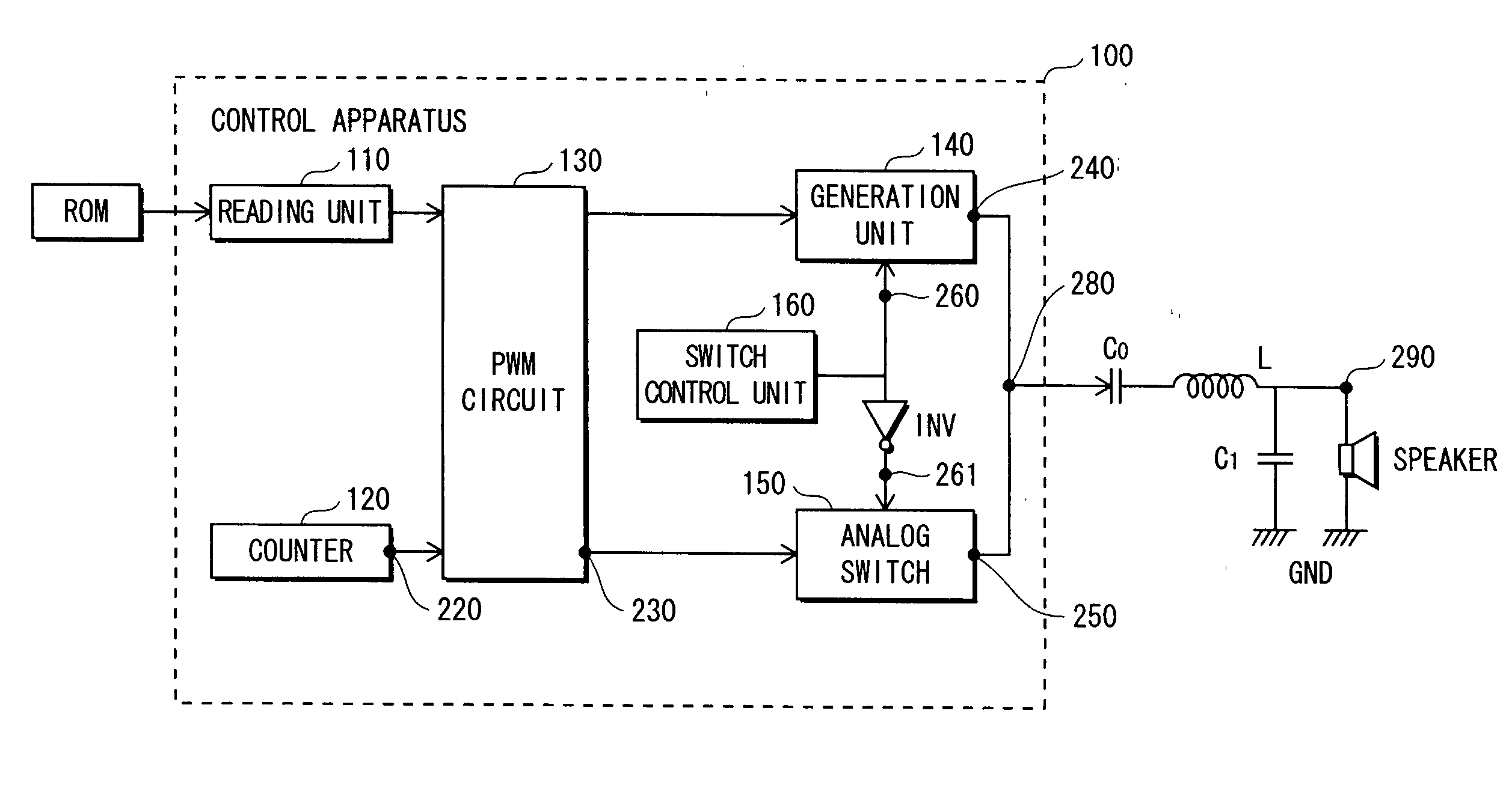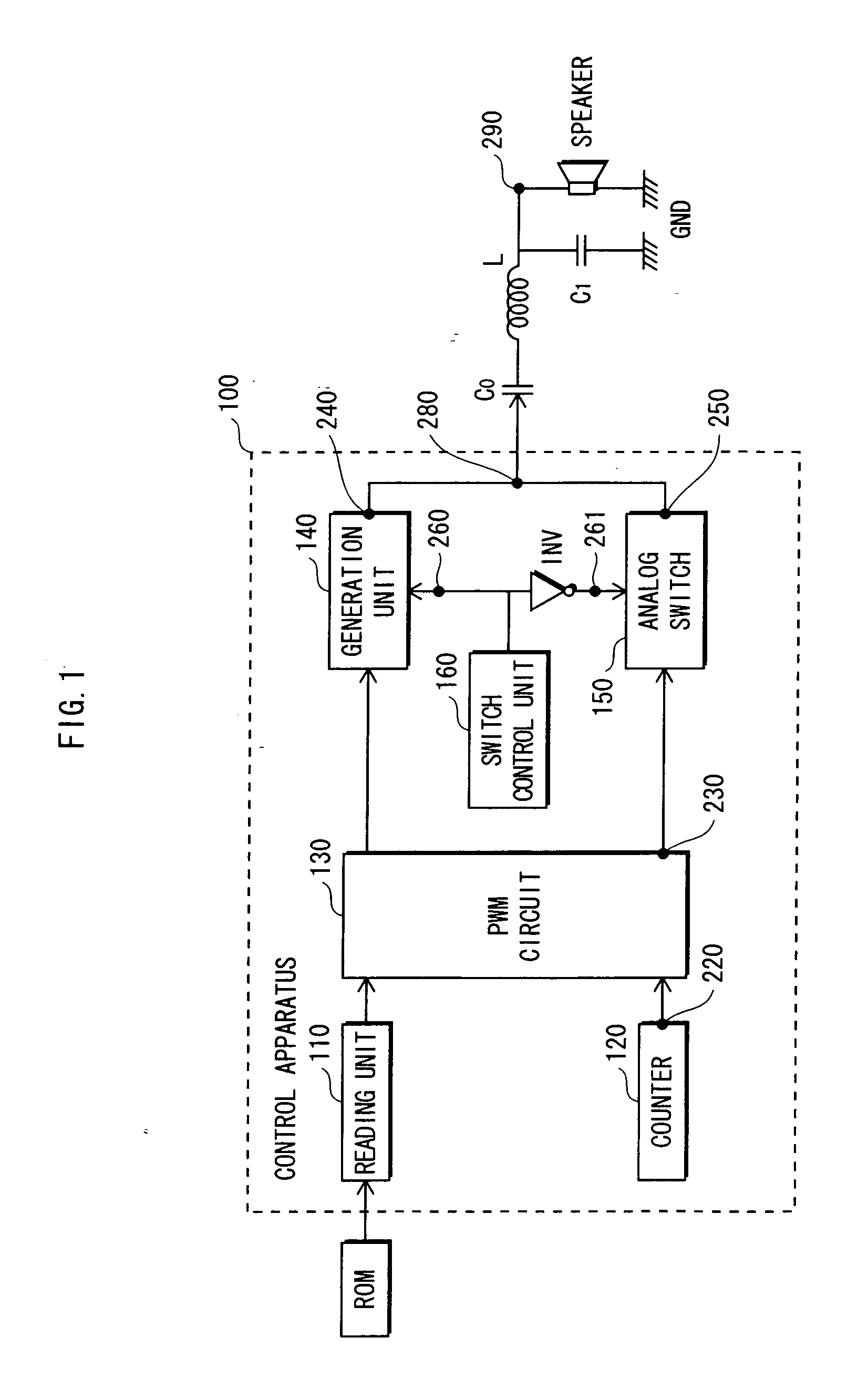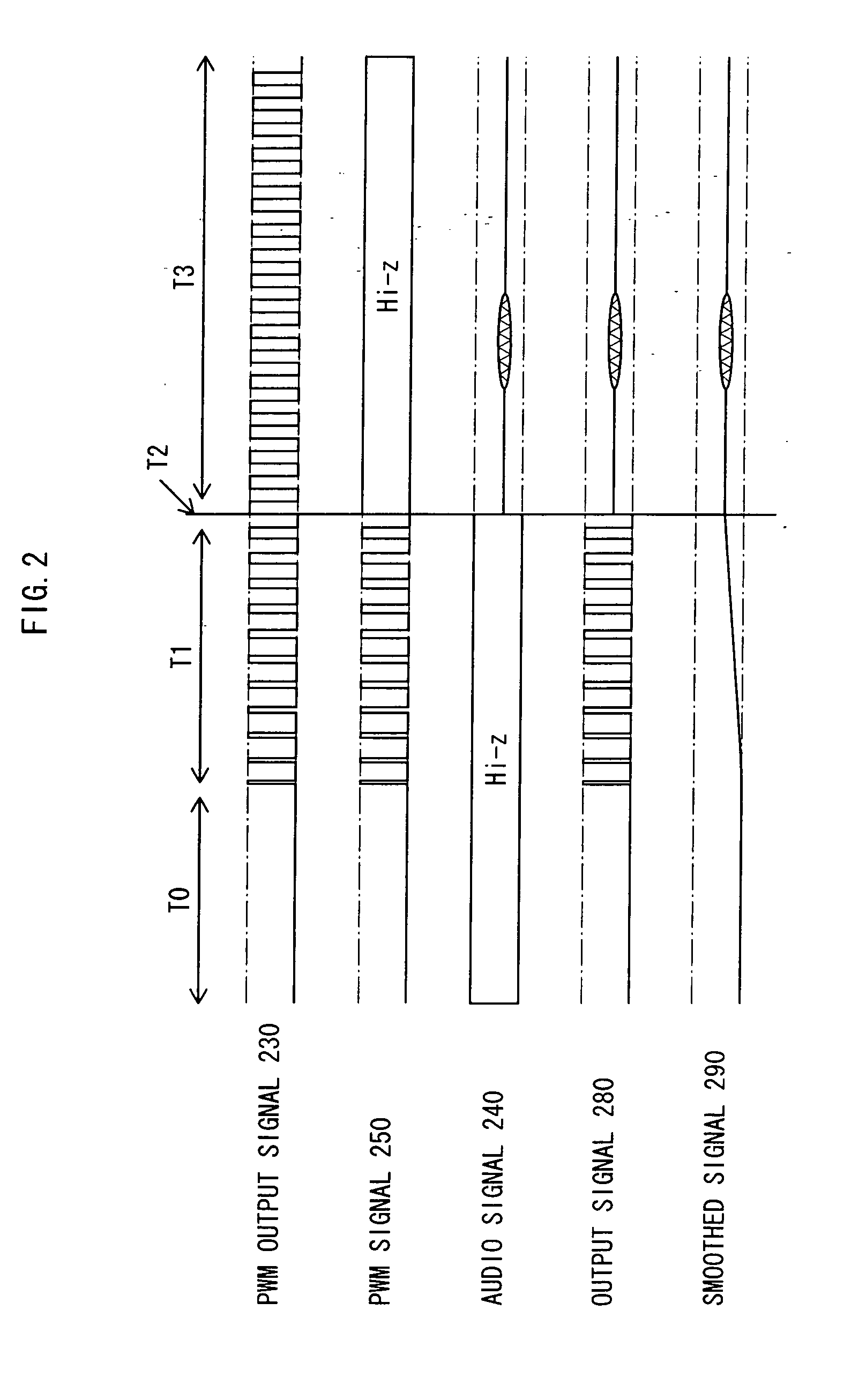Audio signal output control device that suppresses pop sound
a control device and audio signal technology, applied in the direction of gain control, electrical transducers, transducer casings/cabinets/supports, etc., can solve the problems of affecting the affecting the sound quality of the audio signal, and affecting the user's experience, so as to achieve smooth fluctuations
- Summary
- Abstract
- Description
- Claims
- Application Information
AI Technical Summary
Benefits of technology
Problems solved by technology
Method used
Image
Examples
embodiment 1
[0038] Structure
[0039]FIG. 1 shows a structure of a “talking appliance” and a control apparatus 100 in embodiment 1 of the present invention. The “talking appliance” in FIG. 1 has a structure in which audio data stored on a ROM is output as an audio signal by the control apparatus 100 corresponding to the portion enclosed in the dashed line, after which the audio signal passes through a smoothing capacitor C0 for performing smoothing and a noise filter composed of a coil L and a capacitor C1, and is output as audio from the speaker.
[0040] The control apparatus 100 in FIG. 1 includes a reading unit 110, a counter 120, a PWM circuit 130, a generation unit 140, an analog switch 150, and a switch control unit 160.
[0041]FIG. 2 shows the condition of the signal at points in FIG. 1 until the potential of the smoothing capacitor C0 when the power is activated enters the steady-state, and audio is played back. In FIG. 2, the time-area of the signals is divided into three periods, which ar...
embodiment 2
[0068] In the control apparatus of embodiment 1, it is necessary for the duty ratios to be set with a high degree of accuracy in order to smoothly raise the output signal 280 from ground level to the reference potential using the PWM output signal 230. To this end, it is necessary to have a large number of reference clock cycles included in one cycle of the PWM output signal 230. Since the reference clock of the PWM circuit 130 cannot be changed easily, increasing the number of reference clock cycles requires the cycle of the PWM output signal 230 to be made longer. However, the potential of the PWM signal rises and falls with each pulse, thereby causing fluctuations in a signal synchronized with the PWM cycle. Noise is generated when the cycle of the PWM output signal 230 is lengthened and the frequency of the fluctuations enters the audible range.
[0069] Therefore, in embodiment 2 of the present invention, each pulse of the PWM output signal 230 is divided into two or more pulses ...
PUM
 Login to View More
Login to View More Abstract
Description
Claims
Application Information
 Login to View More
Login to View More - R&D
- Intellectual Property
- Life Sciences
- Materials
- Tech Scout
- Unparalleled Data Quality
- Higher Quality Content
- 60% Fewer Hallucinations
Browse by: Latest US Patents, China's latest patents, Technical Efficacy Thesaurus, Application Domain, Technology Topic, Popular Technical Reports.
© 2025 PatSnap. All rights reserved.Legal|Privacy policy|Modern Slavery Act Transparency Statement|Sitemap|About US| Contact US: help@patsnap.com



